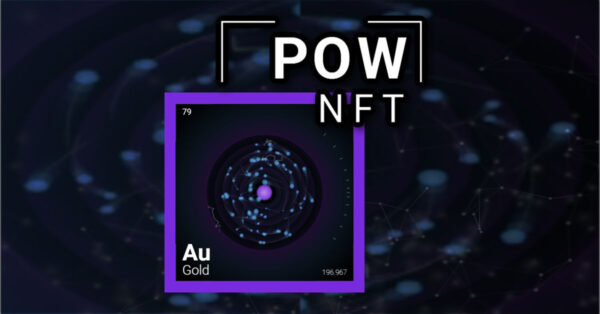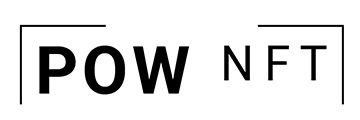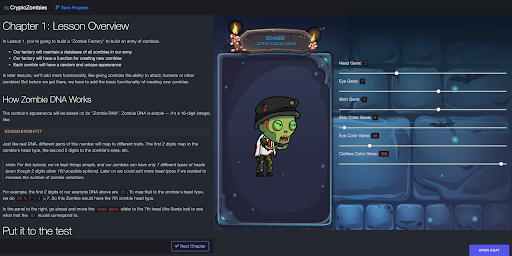


Hello, shitcoiners! This is Shitcoin Sherpa back again, but this time with something a little different. I don’t normally do coin reviews here at Wendy’s Whitepaper, because I like to inform people, or teach folks how to perform their own fundamental analysis or due diligence.
That said, this is a fun enough twist to the NFT concept, and I’m genuinely dying to take a look at some of their processes & functions, and thought that it might be fun to take our readers along for the ride.
But I’m getting ahead of myself: the project in question is Proof of Work NFT, and let me begin by saying that while I own one of their NFTs as of this writing, I have not been paid nor even approached by the team.

Full disclosure, I saw Fitch on Twitter gushing about the concept, and my interest was immediately piqued. Fitch is a real authority on NFTs, and knows better than most where the space is headed – but that’s my personal opinion. Another opinion is that the idea of enforced scarcity & “work” in NFT minting is really, really cool.
The elevator pitch is this: you have different elements that can be minted, and each have stats like the generation they’re in, as well as basic information about the element itself & potentially “boosts” I’m not initially certain about (but we’ll dig deeper) like ion charges, etc.
So in order to mint an NFT of one of these elements, you have to mine via their website (which appears to work on both PC & mobile) until you hit the lucky “nonce” and get the opportunity to mint your very own atom for that element. It costs a set amount of Ethereum to mint it, though, and if you don’t mint in short order you may lose the opportunity. You can set alerts & a metamask pop-up to help with this, though.
The minting fee goes up over time, as does the mining difficulty. The upside of this is that you get a small amount of Ethereum (0.000045) for atoms from the next generation & on, every time one is minted. The NFTs themselves are gorgeous, both animated & with ‘music’ attached.
They have links on the site to technical details about how the ‘music’ is generated, where the project originated, etc. – all really interesting stuff.
But enough pitching; the team can handle that. I want to see how it works. For this we’ll examine the contract on Etherscan. This doesn’t take a lot of prior knowledge of how solidity functions, but rather just the ability to read & digest what you’re seeing. I’ll try to walk you through the process as best as I can.
First, let’s examine the smart contract.
You can find it here and follow along, or just read here if you’d prefer.
First you’ll want to look down to where you see “Contract” and click there. Also notice the checkmark next to it; that is a good thing.

Always check to make sure the contract has been verified; this means that at the very least it is open to scrutiny.
Each line of the contract is numbered, so from here on out if I reference “line 32” or some such, that is where I’m expecting you to look.
First, on lines 62-65 you can see the basics of mining & minting laid out for us. The base cost of mining is .000045, with the “difficulty” of that ramping up by a factor of 3. For those of you not following along, this looks about like…
// MINING VARS
uint BASE_COST = 0.000045 ether;
uint BASE_DIFFICULTY = uint(0xffffffffffffffffffffffffffffffffffffffffffffffffffffffffffffffff)/uint(300);
uint DIFFICULTY_RAMP = 3;
The // at the beginning is to denote that line as being just for comments, so this is where you find a lot of explanations from some functions, if the coder wanted to be thorough. Here we at least get that these are the mining variables. Then you’ll see the base cost, followed by the difficulty & the difficulty ramp.
When you see, “uint”, just know that this is shorthand for “unsigned integer”. I’m linking the definition, but for the purpose of simplifying this, let’s just say it’s a damn number. In this case, a number multiplied by 300.
NOW. What is the takeaway from this?
1. NFTs, in essence, can be programmed just like any other smart contract. If there is some cool stuff your token is doing – guess what? An NFT can do it, and more stylishly, and function as an in-game asset with immutable representation via IPFS. (The Interplanetary File System)
2. These contracts, and any others, can be read & figured out with just a little understanding of the English language & some occasional Googling. Figuring out is half of the fun, but once you learn what a bit of code does – you know it and recognize its use in contracts forever.
If you want a fun way to learn some basic knowledge of smart contracts & associated terms, check out cryptozombies.io – they take you step-by-step through some of the basics, in a fun, free way that is easy enough for most kids (and some adults!) can pick it up.

Until next time, this has been Sherpa for Wendy’s Whitepaper – stay frosty!

Torrent/seedbox aficionado, decentralist, cultural archivist, fundamental analyst, podcast addict, shitcoin-sifter extraordinaire
Tip Jar
BTC: bc1qahxrp47hpguhx8y8r382dekgca34tlv54aufht
Doge: DJRy9gGSUGeyXfVcZXzKLkBv7RmDLv3MhJ
Share This Article
Join 10,000+ forward thinkers! Get crypto education in your inbox.